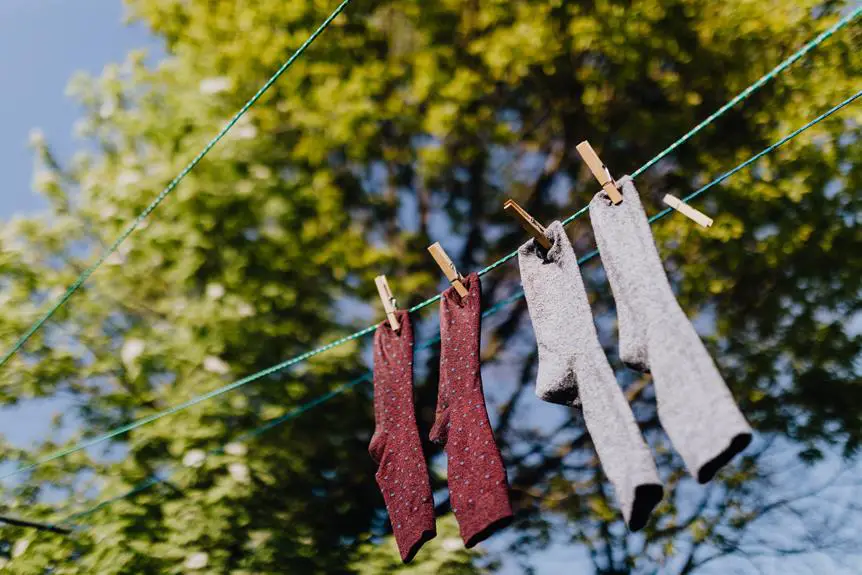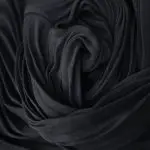Hey, ready to dive into the world of chambray fabric? It's like the chameleon of textiles, blending the casual comfort of denim with the refined look of cotton.
Here are 5 things you need to know about this versatile fabric. From its fascinating history to its unique characteristics, we'll cover it all.
Plus, we'll give you some killer styling tips and essential care instructions.
And if you've ever wondered about the differences between chambray and denim, we've got you covered.
So, grab a seat and get ready to become a chambray expert!
Key Takeaways
- Chambray fabric originated in Cambrai, France in the 16th century and was originally known as 'cambric'.
- It gained popularity for its durability, versatility, and became a staple in workwear and military uniforms.
- Chambray fabric is known for its distinct blend of white and colored yarns, subtle textured appearance, and resistance to wear and tear.
- It is ideal for layering, can be styled in various ways, and should be cared for by washing in cold water with mild detergent and air drying to avoid damage.
Chambray Fabric: A Brief History
If you're curious about the origins of chambray fabric, its history dates back to the 16th century in Cambrai, France. Originally, the fabric was known as 'cambric,' named after the French town. It gained popularity due to its durability and versatility, eventually becoming a staple in workwear and military uniforms. The influence of chambray spread beyond France, especially during the 19th century, as it became sought after in the United States and other parts of Europe.
The production of chambray involves a unique weaving technique where white yarn is woven in one direction and colored yarn in the other, creating a subtle, blended appearance. This method gives chambray its distinctive look and feel, making it a favorite choice for casual clothing.
As the demand for chambray grew, the textile industry adapted and modernized its production methods. Today, chambray is manufactured globally, with different regions adding their own twist to the fabric, further enriching its appeal. Understanding the origin and influence of chambray fabric provides insight into its enduring popularity and its continued presence in contemporary fashion.
Characteristics of Chambray Fabric
When working with chambray fabric, you'll notice its distinct blend of white and colored yarns, giving it a subtle, textured appearance. This unique characteristic is what sets chambray apart from other fabrics.
One of the most notable features of chambray is its durability. The fabric is woven in such a way that it can withstand regular wear and tear, making it ideal for garments that are meant to last. Whether it's a shirt, dress, or even a pair of jeans, chambray's sturdiness ensures that your clothing will stand the test of time.
In addition to its durability, chambray fabric is also known for its breathability. The weave of the fabric allows for air to flow through easily, making it comfortable to wear, especially in warmer climates. This breathability also makes chambray a great choice for layering, as it won't feel stifling or heavy.
Styling Tips for Chambray Fabric
To create a stylish and versatile look with chambray fabric, consider pairing it with both casual and dressy pieces.
Chambray fabric is incredibly versatile and perfect for creating trendy summer outfits. Here are some styling tips to help you rock your chambray pieces:
Casual Look:
- For a relaxed vibe, pair a chambray shirt with white jeans and sneakers. Roll up the sleeves for a laid-back feel.
- Complete the look with some trendy sunglasses and a straw hat for the perfect summer ensemble.
Dressy Look:
- Dress up your chambray dress with a stylish belt and some heeled sandals. Add some statement earrings for a chic touch.
- Layer a lightweight cardigan or a blazer over your chambray top for a sophisticated and fashion-forward outfit.
These layering techniques and fashion trends will help you make the most out of your chambray fabric, whether you're going for a casual day out or a dressier evening look. Embrace the versatility of chambray and create effortlessly stylish outfits for any occasion.
Care Instructions for Chambray Fabric
When washing chambray fabric, it's important to follow specific care instructions to maintain its quality and color. To keep your chambray looking its best, always check the garment's care label for any specific recommendations.
Generally, it's best to wash chambray in cold water with a mild detergent to prevent any potential shrinking or color fading. Additionally, turning the garment inside out before washing can help preserve the fabric's color and prevent any snags or tears.
For drying, it's advisable to air dry chambray to avoid any potential damage from high heat. If you choose to iron your chambray, make sure to do so while it's still slightly damp using a medium to low heat setting. Always test a small, inconspicuous area first to ensure the iron isn't too hot and to prevent any accidental scorching.
Chambray Fabric Vs. Denim: Key Differences
To understand the differences between chambray fabric and denim, let's delve into their unique characteristics and composition. When comparing chambray fabric and denim, it's important to note that while they may appear similar at first glance, there are distinct variations that set them apart.
Composition:
Chambray fabric is woven with a colored yarn in the warp and a white yarn in the weft, resulting in a plain weave. Denim, on the other hand, is characterized by its twill weave construction, with dyed yarn used for the warp and undyed yarn for the weft.
Appearance and Texture:
Chambray fabric has a lighter weight and a smoother texture compared to denim. It often features a solid, lighter color with a more relaxed and casual aesthetic. In contrast, denim tends to be heavier, with a distinctive diagonal ribbing and a rugged, durable appearance.
Understanding these differences can help you make informed decisions when incorporating chambray fabric or denim into your fashion choices. As fashion trends continue to evolve, having a keen eye for these distinctions allows you to curate your wardrobe with precision and style.
Frequently Asked Questions
Can Chambray Fabric Be Used for Formal Wear or Is It Strictly Casual?
Yes, chambray fabric can be used for formal wear. It's versatile and can be dressed up or down. Just make sure to care for it properly to maintain its crisp look. It also offers dyeing options for customization.
What Are the Best Types of Garments to Make With Chambray Fabric?
When working with chambray fabric, you can create versatile garment patterns like button-up shirts, dresses, and skirts. The fabric's lightweight and breathable nature offers a range of styling options, from casual to semi-formal looks.
Is Chambray Fabric Prone to Shrinking or Fading After Washing?
After washing, chambray fabric may shrink slightly, and some fading can occur. To maintain its color and shape, follow fabric care instructions. Chambray comes in various color options, so you can choose what suits you best.
Are There Any Special Considerations for Sewing or Working With Chambray Fabric?
When sewing with chambray, use a sharp needle and lower tension to prevent puckering. Pre-wash the fabric to minimize shrinkage. For fabric care, machine wash on cold and avoid using bleach to maintain the color.
Can Chambray Fabric Be Dyed or Does It Only Come in a Limited Range of Colors?
Yes, chambray fabric can be dyed, offering versatility in color options. This makes it suitable for both formal occasions and casual styling. The dyeing process allows for customization, adding a unique touch to your chambray pieces.
- Why Is Red Velvet Not Red? - April 25, 2024
- How Do You Describe Velvet Fabric? - April 25, 2024
- How Strong Is Velvet? - April 25, 2024






